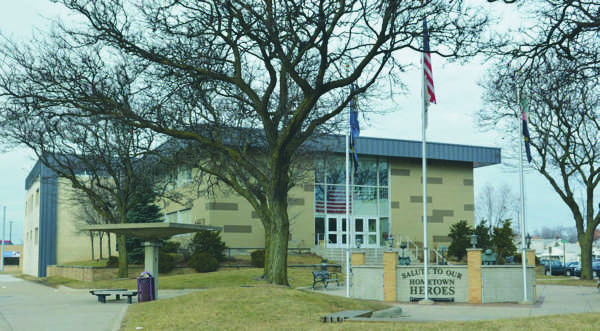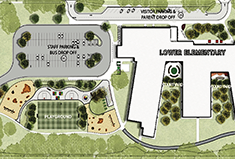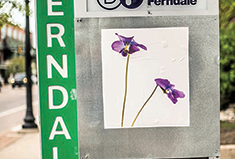Sketching Hazel Park’s City Hall
By Maggie Boleyn
Photos by Bernie Laframboise
ONE GREAT BUILDING DOES NOT MAKE A GREAT CITY,” is a quote attributed to the British architect Thomas Heatherwick. However, when the building in question is the seat of most city services, as well as a courthouse and jail, an adequate building is a practical necessity. On the eve of the City’s 75th anniversary, the citizens of Hazel Park received a great building in the form of a remodeled and expanded City Hall.
“I feel that the expansion and remodeling gives the ‘official’ corner of the city a badly needed update,” said Richard Robbins, a member of Hazel Park’s Historical Commission. “The exterior remodel meshes with the architecture, since both are Japanese-based design,” he continued.
Chuck Gladue, another member of Hazel Park’s Historical Commission, adds “I was happy to see it done. The building was in sad shape. This has turned one of the worst buildings into one of the best-looking on John R.” Gladue pointed out that the project was achieved without costing additional taxpayer dollars.
The timeline for a single structure providing a variety of governmental serv-ices in Hazel Park begins nearly 90 years ago. In 1928, Howard Beecher, who later became principal of the High School, made a passionate plea for Hazel Park to become a city. He argued that a seat of local government was needed in Hazel Park, which was a rapidly expanding area. At one point, Hazel Park had the largest population residing in an unincorporated area in the entire country.
“There are many things that could be done under local government that cannot be done under the present form,” Beecher wrote. At that time, Town-ship offices were inconveniently located in Royal Oak, four miles away. Even worse, county offices were “16 miles distant” in the city of Pontiac. “It is a real job to make progress in a community where there are 14,000 people with no local government,” Beecher argued.
Beecher also pointed out that four deputy sheriffs appointed by the County Sheriff of Pontiac, were headquartered in a police booth located at “the main corner of the district” at John R and 9 Mile. The police booth was paid for and moved to the corner by the local Exchange Club.
Robbins notes that the present-day City Hall is also home to the courthouse. “It was built as a multi-purpose facility,” he said of the building which has stood on the corner of 9 Mile and John R since the 1970s. In addition to court offices on the upper floor, the Hazel Park Police Department (HPPD) is headquartered on the lower floor. A door from one of the court rooms allows police to bring prisoners from the jail right into the courtroom. Prior to the original construction of the present site, Robbins said, there really were no previous courthouses, “unless you consider the other two city halls.”
Gladue said that previous city business and City Council meetings were held in the original library building on Pearl Street. Later, City offices were located on 9 Mile east of John R where the present-day Checker’s Restaurant stands. This location, built in the 1940s, was chosen to be close to the police and fire departments. “The first full city hall was located at Stephenson and Rhodes,” Gladue said.
The turbulent decade of the 1960s brought dramatic change to our nation and also to the city of Hazel Park. As Lucille Lacey documented, the I-75 freeway expansion uprooted a portion of the John R business district as well as the “modern era” City Hall. During the construction on the present-day site, city offices were moved to the present-day Recreation Center on Woodward Heights.
At present, in addition to space for the usual City services such as the Water Department, Code Enforcement, the Hazel Park Police Department (HPPD) and other City offices, the remodeled building has expanded the space used for the 43rd District Court in Hazel Park. Hazel Park’s City Council also holds meetings in the building.
During the remodeling project, Longfellow School was revamped and put into service as a Courthouse. HPPD transported prisoners from the jail to Longfellow and back again.
Beth Holland, a member of the Historical Commission and a city council-person, notes that the completed remodel has reaped benefits for residents. She said that the first Council meeting in the new space provided improved acoustics and a better quality of sound for broadcasting meetings via cable TV. Holland points out that the remodel has made the building fully compliant with Americans with Disabilities regulations. “We’re in 2017 now,” she said of the new space.



